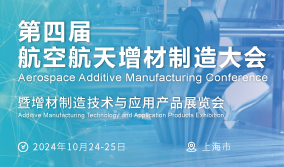薄膜铌酸锂光电器件与超大规模光子集成(特邀)  下载: 6040次封底文章创刊五十周年特邀【增强内容出版】
下载: 6040次封底文章创刊五十周年特邀【增强内容出版】
近些年来,由于大数据、人工智能等信息技术发展的迫切需求,光子集成技术得到了极大关注。目前可以用作光子集成的材料体系有很多,受关注的主要有Si/SiN、Ⅲ-Ⅴ族材料(以InP为代表)、以及铌酸锂(LN)等。材料的选取要考虑两个关键指标:波导传输损耗和片上电光调制功耗。铌酸锂以其大透明窗口、低传输损耗、良好的电光/压电/非线性等物理性能,以及优良的机械稳定性等,在实现这两个指标方面,有其特有的优势。
在《中国激光》创刊50周年之际,华东师范大学程亚教授应邀为该刊撰写了《薄膜铌酸锂光电器件与超大规模光子集成》一文,该文详细回顾了薄膜铌酸锂光子技术的发展历程,介绍了重要光子器件如电光调制器、延迟线、电光频率梳、量子光源、非线性超构表面、激光器与放大器等近期的研究进展。由于超大规模光子集成在量子信息、人工智能和大数据等方面有重要应用,程亚教授也介绍了其团队在薄膜铌酸锂大规模光子集成技术方面的探索以及所取得的进展。该综述内容虽然广泛但针对性强,无论是正从事薄膜铌酸锂光电器件研发的人员,还是关注光子集成技术发展的读者,阅读该文后都会有所收益。
目前薄膜铌酸锂光电器件与规模光子集成普遍使用的还是电子束曝光或深紫外(DUV)光刻结合离子束刻蚀技术,程亚教授针对铌酸锂特有的物理与化学性质,提出了飞秒激光直写辅助化学机械抛光(PLACE)的薄膜铌酸锂加工新技术。其团队采用这种技术制备出了多种高性能薄膜光电器件,实现了传输损耗低至0.027 dB/cm的波导、
该综述在“总结与展望”部分指出,虽然薄膜铌酸锂光子技术已经实现了一系列突破,但目前所研制的薄膜器件在性能上距其应达到的物理极限尚有很大距离,薄膜铌酸锂集成光子技术发展仍有很大的提升空间。硅光技术有微电子技术可以“借鉴”,而薄膜铌酸锂的精细加工,还需根据材料自身的特性,继续进行探索和创新。与硅光等相对成熟的技术相比,薄膜铌酸锂集成光子技术整体正处于快速发展阶段。如何让薄膜铌酸锂材料更好、更快地助力光电子技术的发展,最终实现产业化,学术界与产业界仍需共同努力!
2024-01-19
近年来,薄膜铌酸锂光子集成技术发展极为迅速,其背后有着深刻的物理、材料、技术原因。单晶薄膜铌酸锂为解决光子集成芯片领域长期存在的低传输损耗、高密度集成以及低调制功耗需求提供了至今为止综合性能最优的解决方案。面向未来的新一代高速光电器件与超大规模光子集成芯片应用,本文回顾了薄膜铌酸锂光子技术的起源及其近期的快速发展,讨论了若干薄膜铌酸锂光子结构的加工技术,并展示了一系列当前性能最优的薄膜铌酸锂光子集成器件与系统,包括超低损耗可调光波导延时线、超高速光调制器、高效率量子光源,以及高功率片上放大器与片上激光器。这些器件以其体积小、质量轻、功耗低、性能好的综合优势,将对整个光电子产业产生难以估量的影响。
The recent advancement in thin film lithium niobate photonic integration technology has been rapid, driven by profound physical, material, and technological factors. Single crystal thin film lithium niobate is particularly noteworthy for offering the most comprehensive performance solution to date, addressing long-term challenges in low transmission loss, high-density integration, and low modulation power consumption within the realm of photonic integrated circuits. This paper provides an overview of the origin and recent swift development of thin film lithium niobate photonic technology, focusing on its potential for the future generation of high-speed optoelectronic devices and ultra-large-scale photonic integrated circuit applications. Various processing technologies for thin film lithium niobate photonic structures are discussed, accompanied by the introduction of current high-performance devices and systems. These include ultra-low loss tunable optical delay lines, ultra-fast light modulators, high-efficiency quantum light sources, as well as high-power on-chip amplifiers and lasers. These devices, distinguished by their unprecedented advantages of small size, light weight, low power consumption, and high performance, are poised to make a tremendous impact on the entire optoelectronic industry.
Since the laboratory production of the lithium niobate single crystal, lithium niobate has emerged as a crucial material in the fields of electro-optics and nonlinear optics. Optical modulators based on the linear electro-optic effect, utilizing lithium niobate, offer notable advantages including high modulation rates, a substantial extinction ratio, low chirp, and high linearity. In the 21st century, integrated photonics technology has gained increasing attention for two primary reasons. Firstly, the demand for photonic devices with attributes such as low energy consumption, high-performance computing, and reconfiguration capabilities has surged due to the explosive growth in applications for information technology, including big data, artificial intelligence, high-speed networks, virtual reality, and quantum information processing. Secondly, integrated photonics technology itself has been continuously advancing. The enhancement of on-chip photonic device performance and cost reduction have reached a threshold that is propelling the emergence of a new photonic industry.
Traditional fabrication techniques, such as ion diffusion and ion implantation, impose limitations on the modulation efficiency and power consumption of lithium niobate modulators, impeding the progress of lithium niobate photonic integration technology. Overcoming this challenge requires addressing both material platforms and device fabrication. In this context, thin film lithium niobate has emerged as a pivotal material, paving the way for integrated photonics. China has long been engaged in research on lithium niobate materials and photonics, contributing significantly to the field's advancement through several crucial milestones. Therefore, it is essential to summarize the recent revolution to provide guidance for future development.
The fabrication flow diagram for the electron beam lithography combined with ion etching process is presented (Fig. 1). A schematic diagram of the photolithography-assisted chemo-mechanical etching (PLACE) technique is provided (Fig. 2). The report includes an ultra-high-speed high-resolution laser lithography system for lithium niobate integrated photonics (Fig. 3). Through the integration of thin film lithium niobate with advanced fabrication techniques, substantial progress has been achieved in the development of lithium niobate photonic devices, encompassing delay lines (Fig. 4), high-speed electro-optical modulators (Fig. 5), optical frequency combs (Fig. 6), quantum light sources (Fig. 7), metasurfaces (Fig. 8), waveguide lasers (Fig. 9), and amplifiers (Fig. 10). Additionally, the article outlines some integrated photonics applications. Specifically, the achievement of electro-optically 4×4 programmable photonic circuits enabled by wafer-scale integration on thin film lithium niobate is illustrated (Fig. 11). This device, composed of cascaded MZIs, demonstrates a total on-chip power dissipation of only 1.5 mW when operated at a 100 MHz modulation rate. Furthermore, an on-chip arrayed waveguide grating (AWG) fabricated on thin film lithium niobate with on-chip loss as low as 3.32 dB is reported (Fig. 12). Finally, four-channel waveguide amplifiers fabricated on monolithically integrated active/passive thin film lithium niobate are also showcased (Fig. 11), demonstrating a robust low-loss optical interface for the monolithic integration of passive and active thin film lithium niobate photonics.
Significant enhancements have been achieved in critical parameters of photonic devices, including modulation bandwidth, power consumption, propagation loss, and active and passive functionalities, as well as advancements in large-scale integration. These technological strides are poised to benefit the evolution of integrated photonics applications. However, some exceptional performances have yet to reach the physical limits of lithium niobate photonics devices, necessitating further efforts in thin film lithium niobate integrated photonics technology. Notably, numerous thin film lithium niobate photonics devices have already approached or even attained optical performances suitable for industrial applications. This opens up abundant opportunities for the development of next-generation optical information technology.
程亚. 薄膜铌酸锂光电器件与超大规模光子集成(特邀)[J]. 中国激光, 2024, 51(1): 0119001. Ya Cheng. Thin Film Lithium Niobate Electro-Optic Devices and Ultralarge-Scale Photonic Integration(Invited)[J]. Chinese Journal of Lasers, 2024, 51(1): 0119001.








